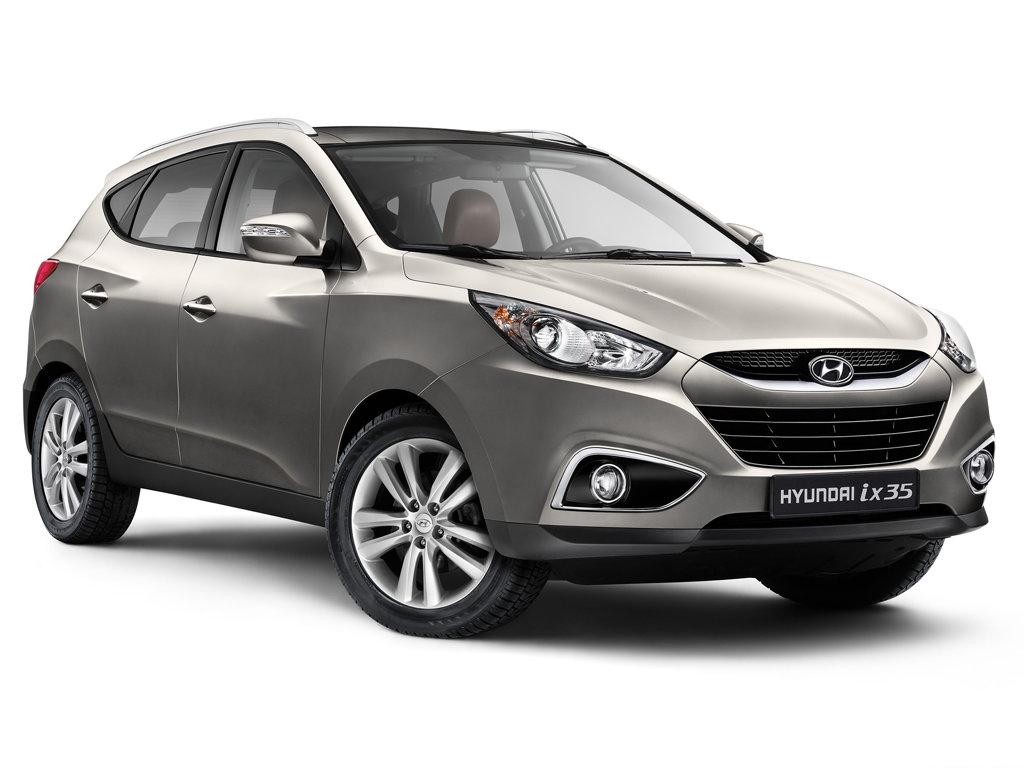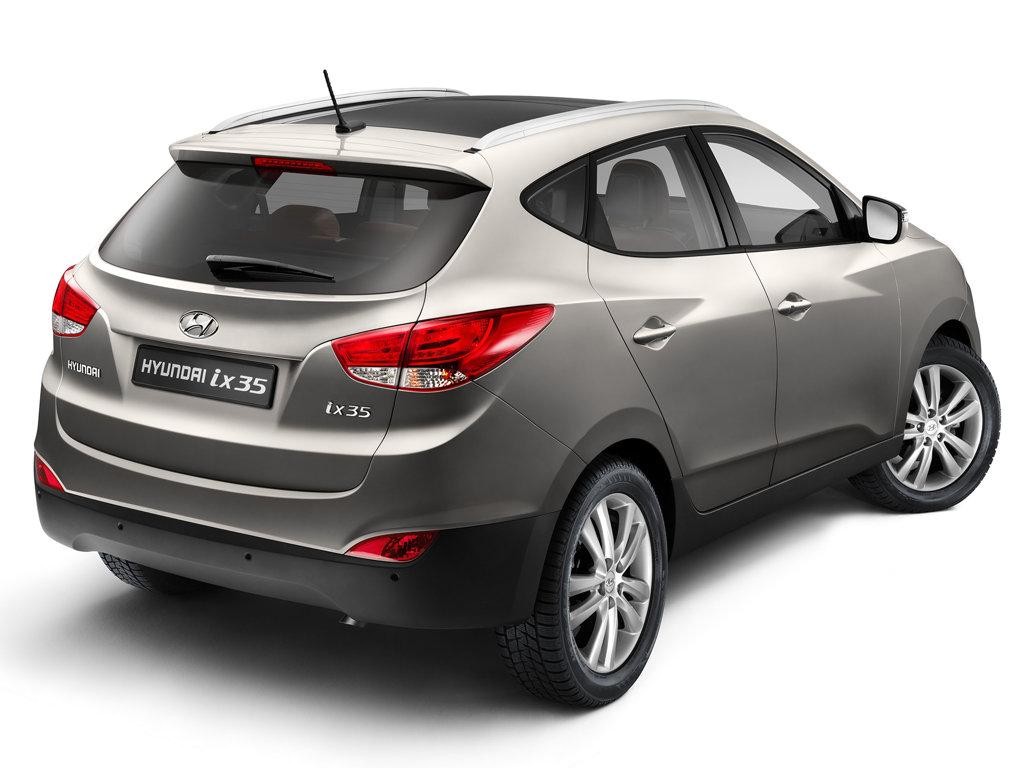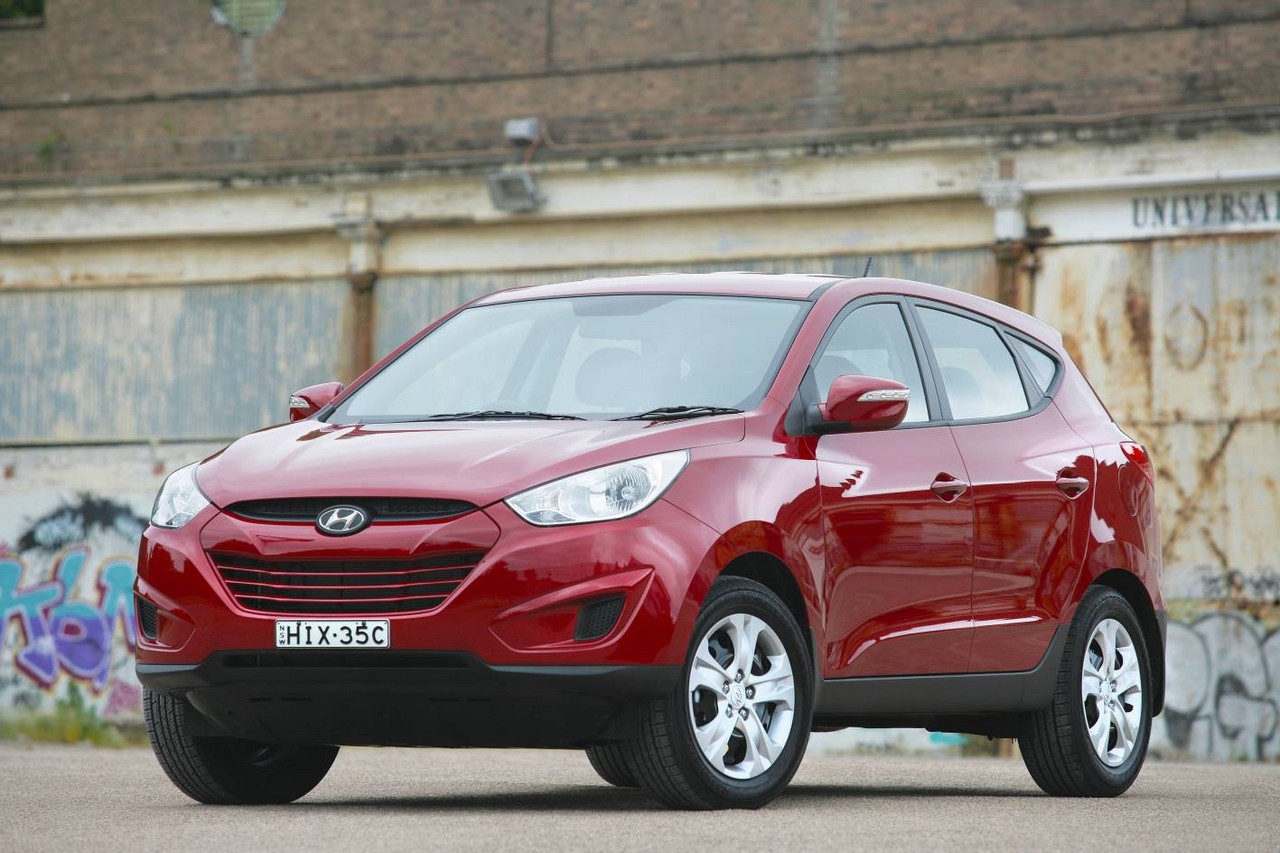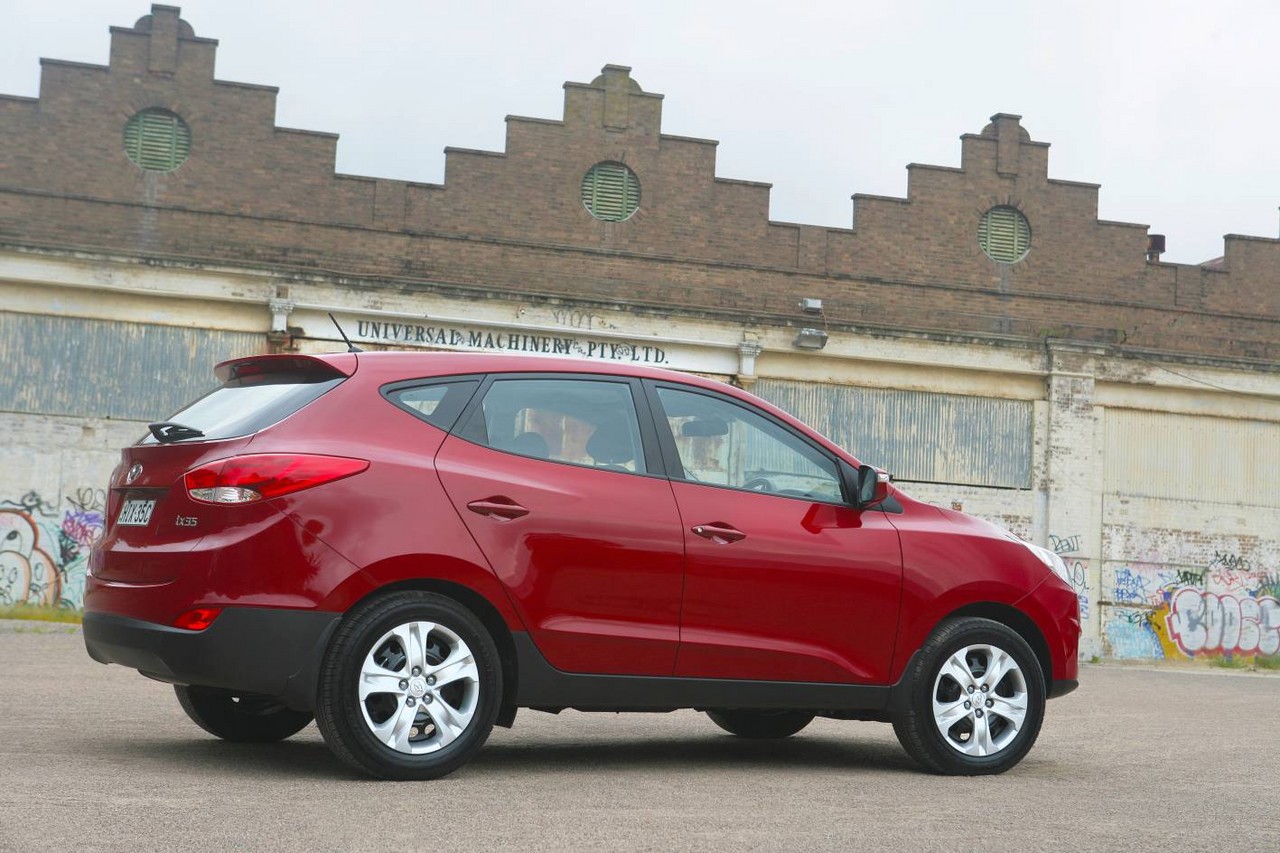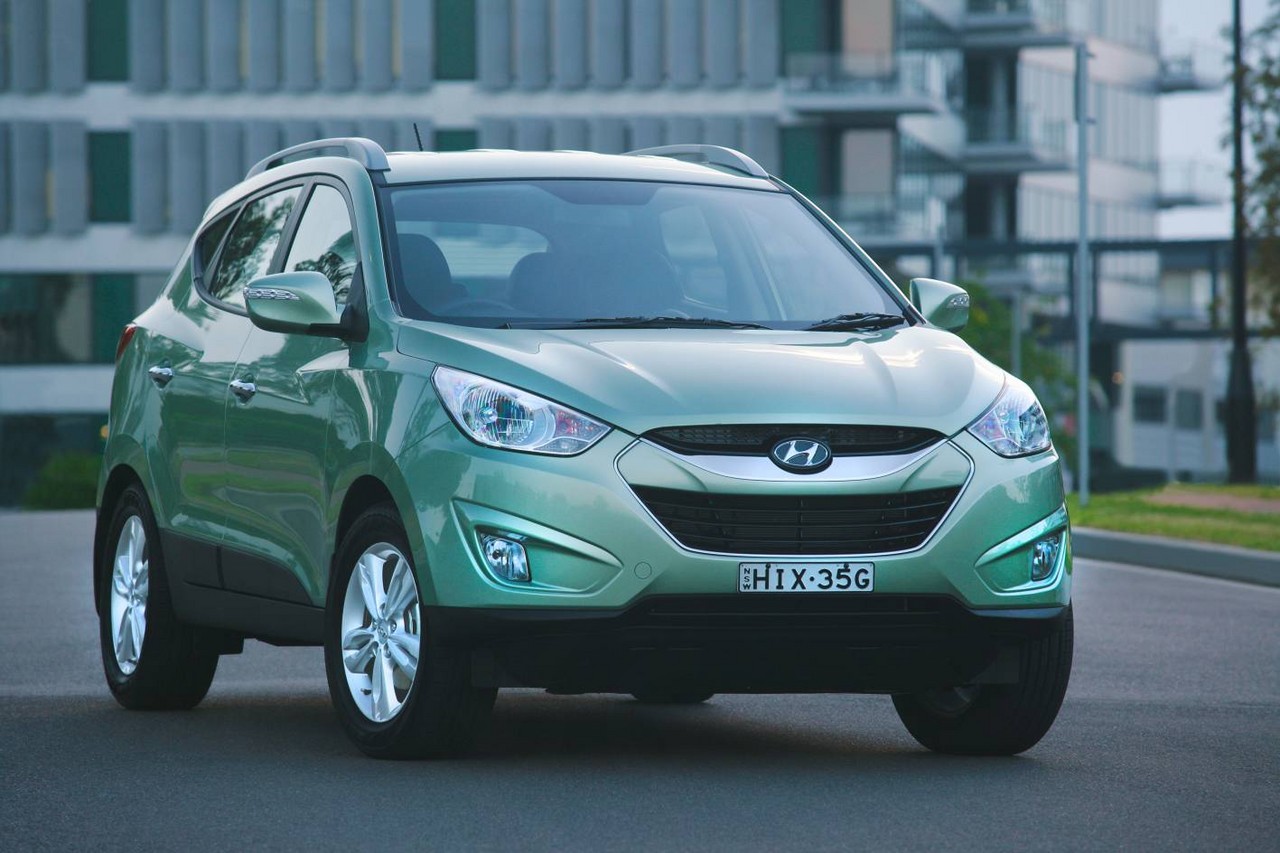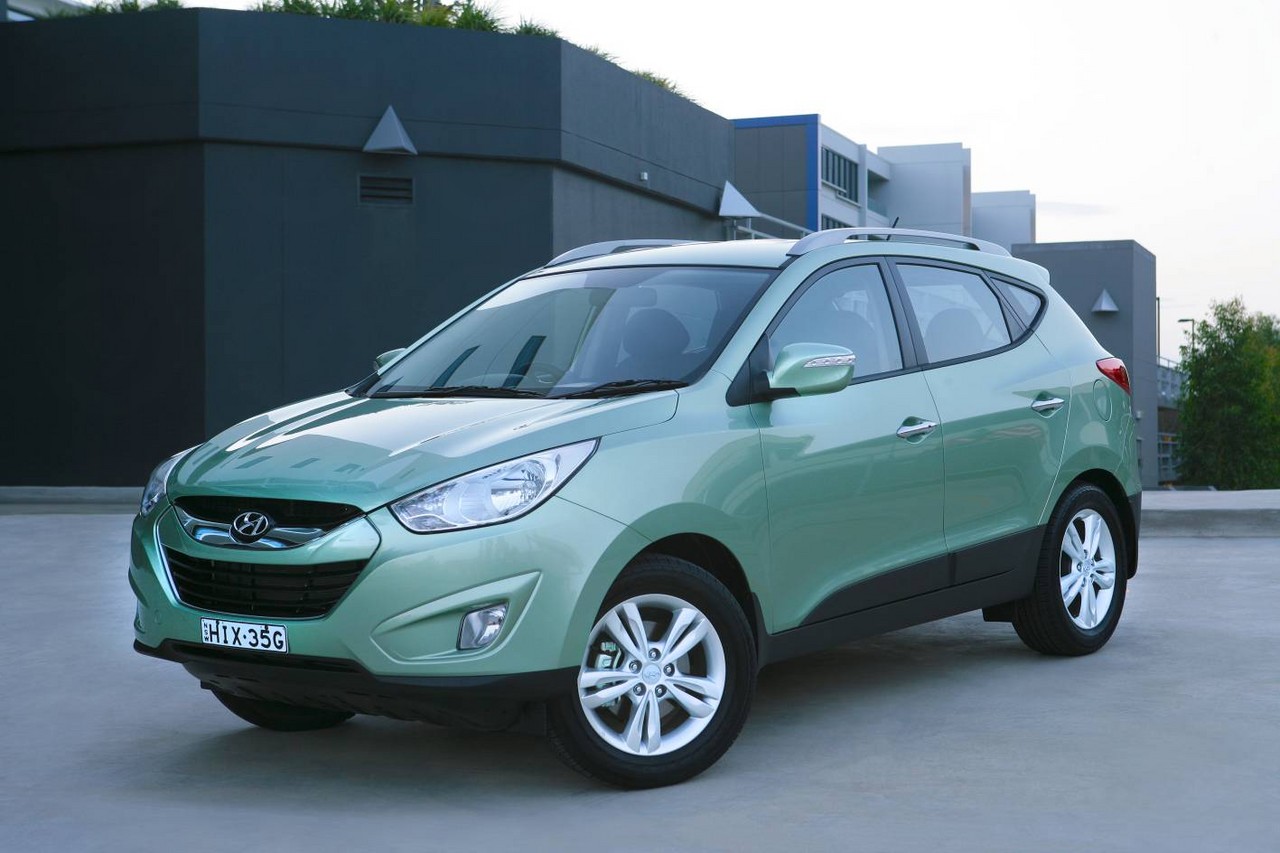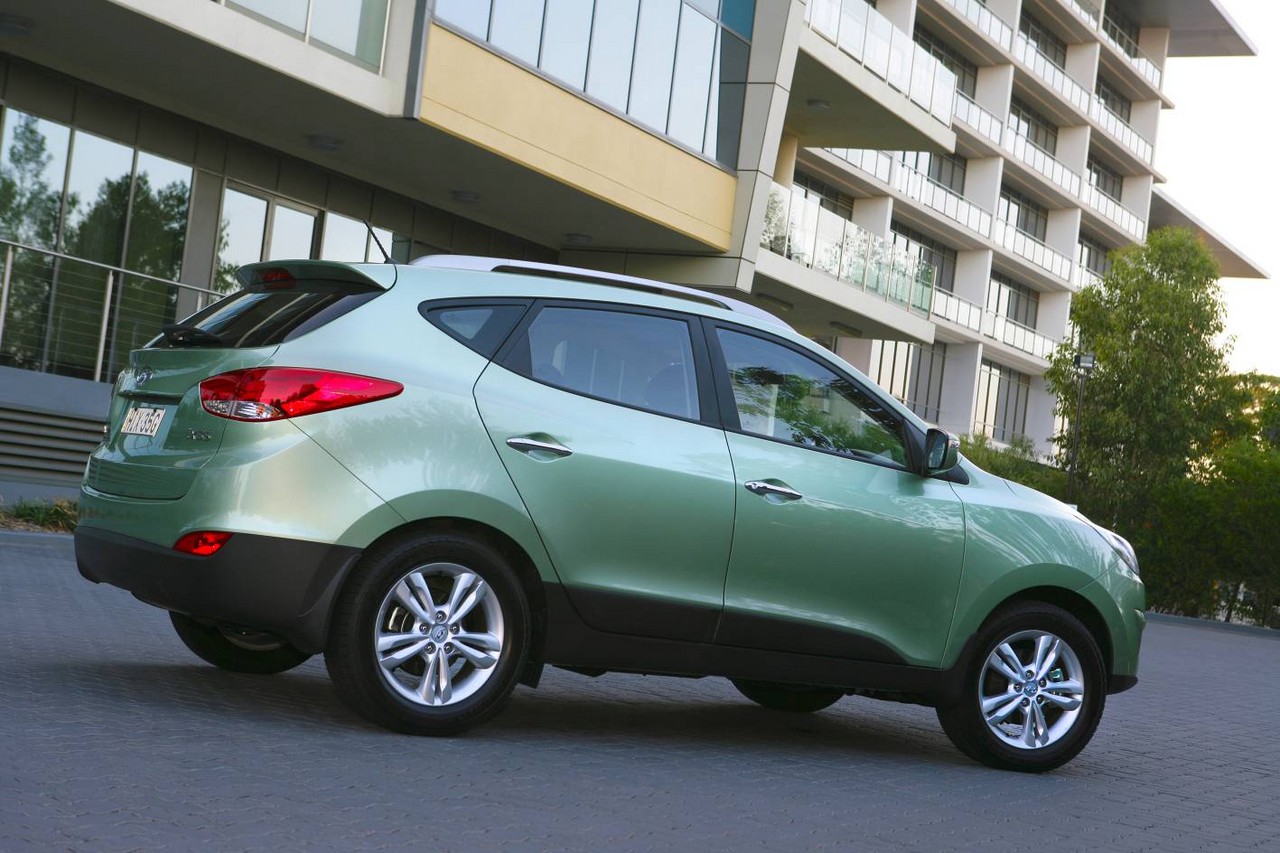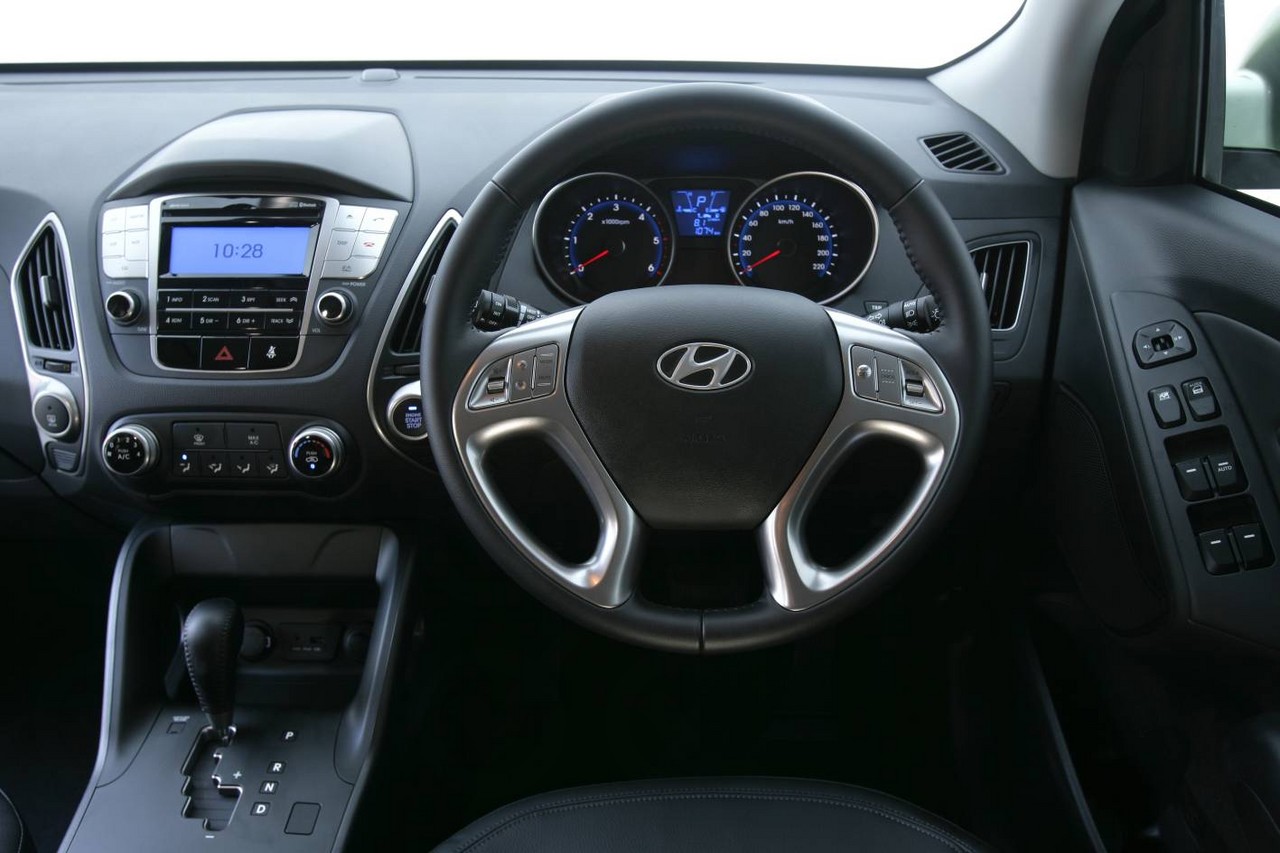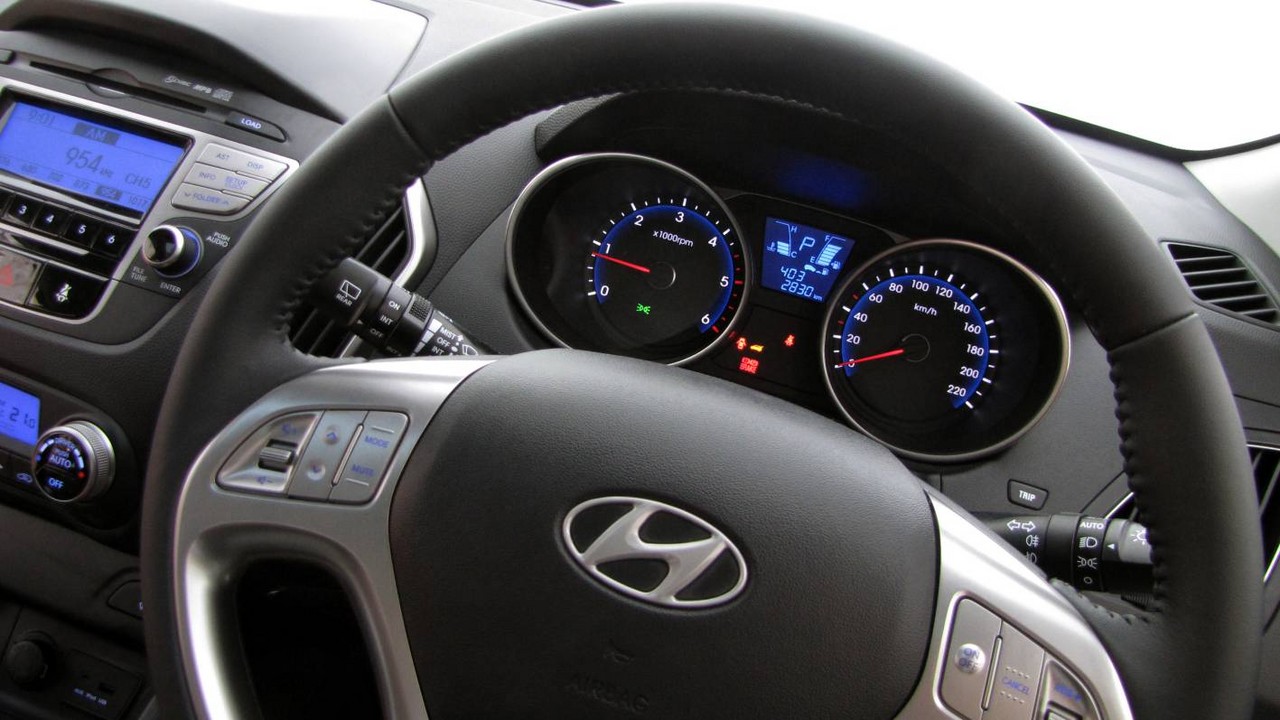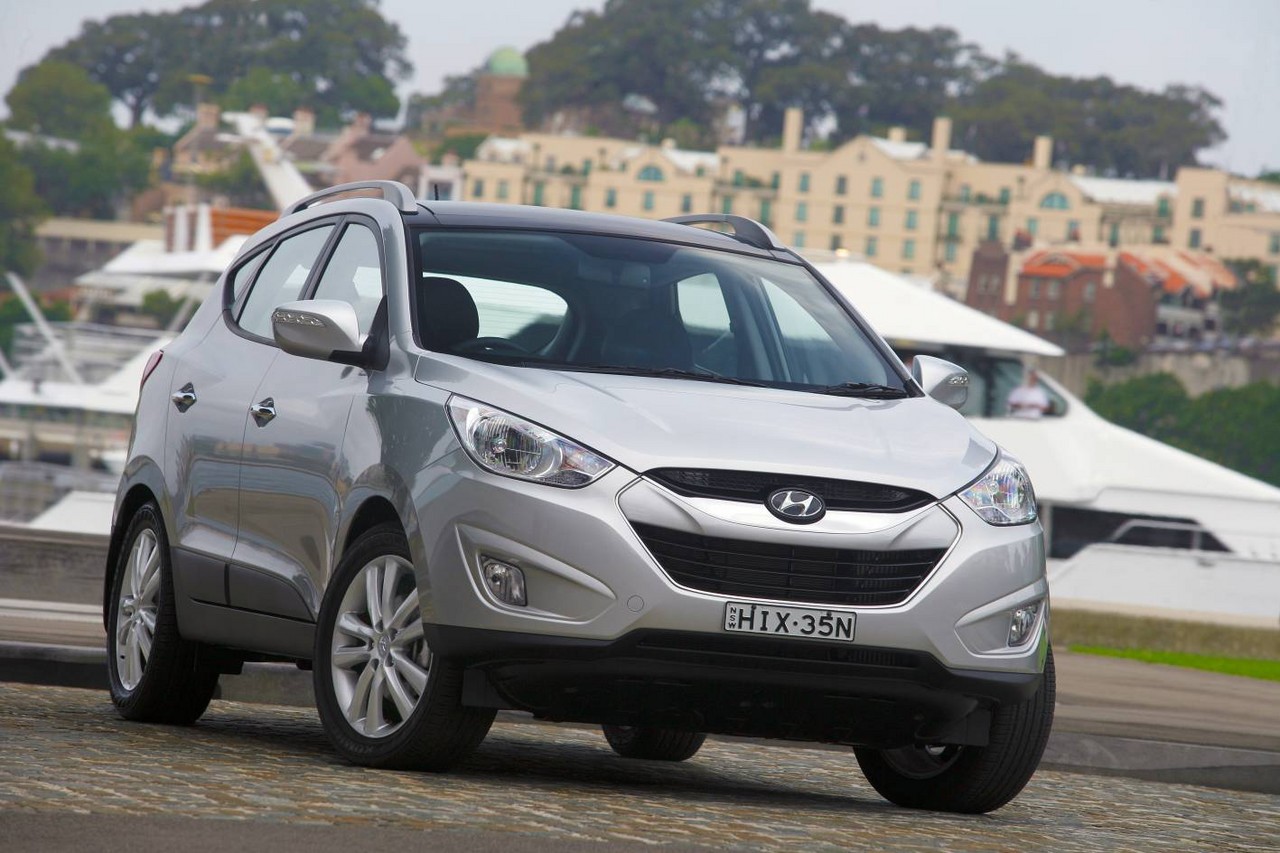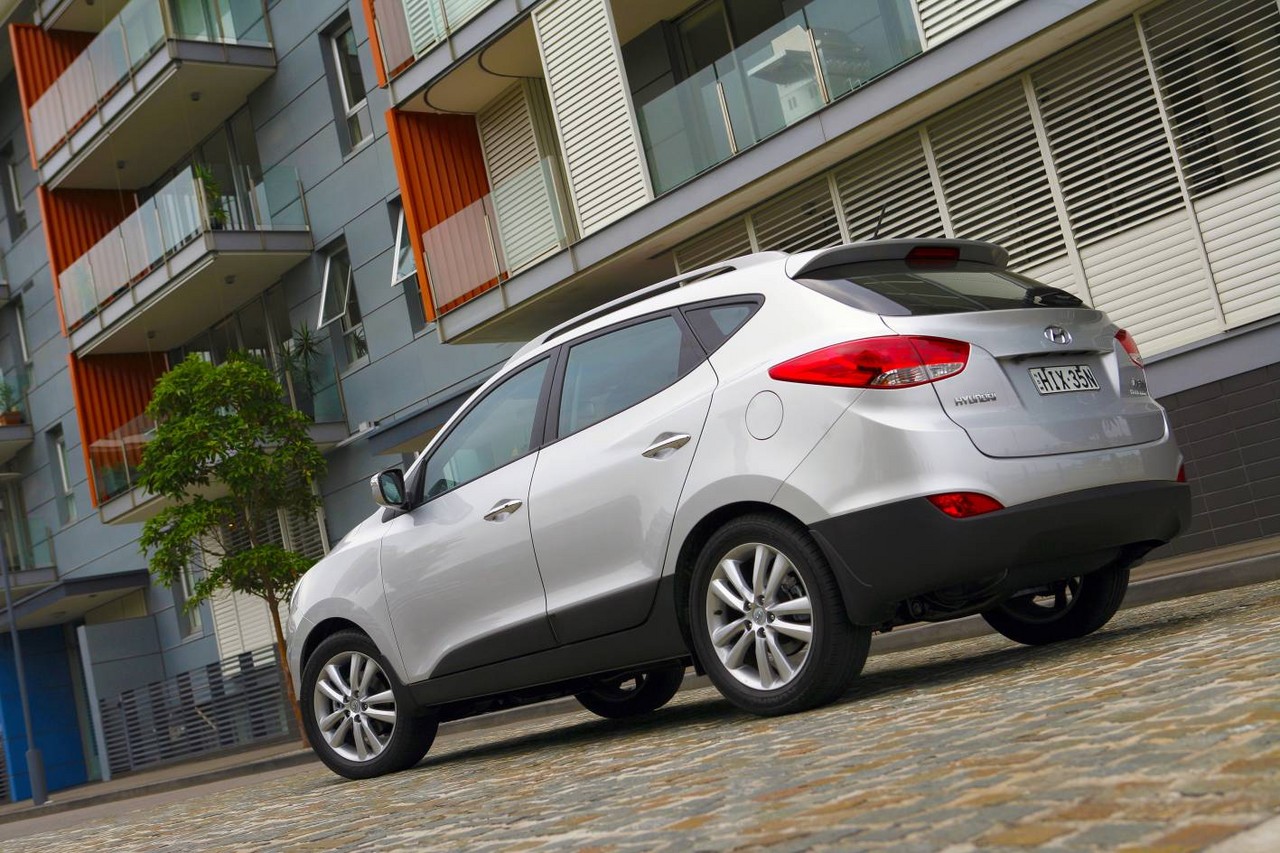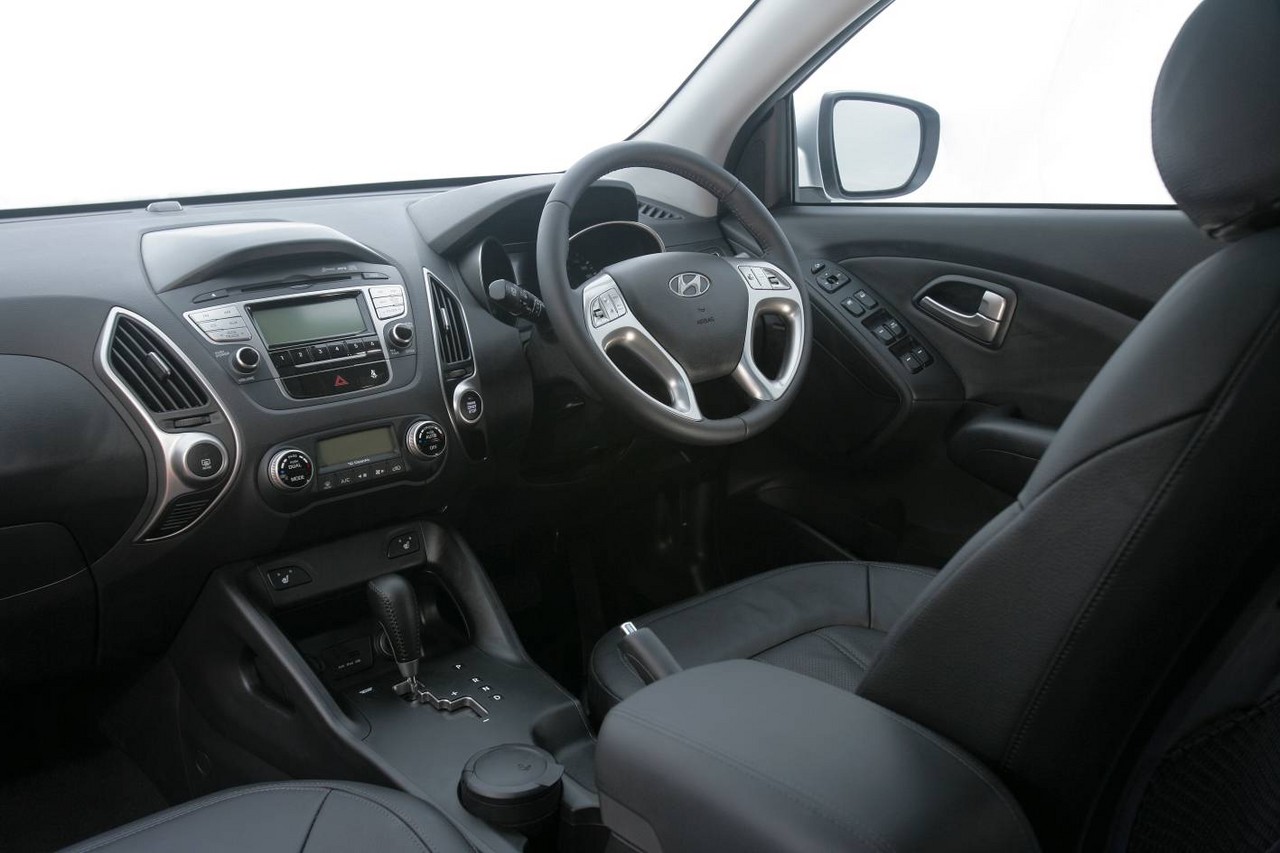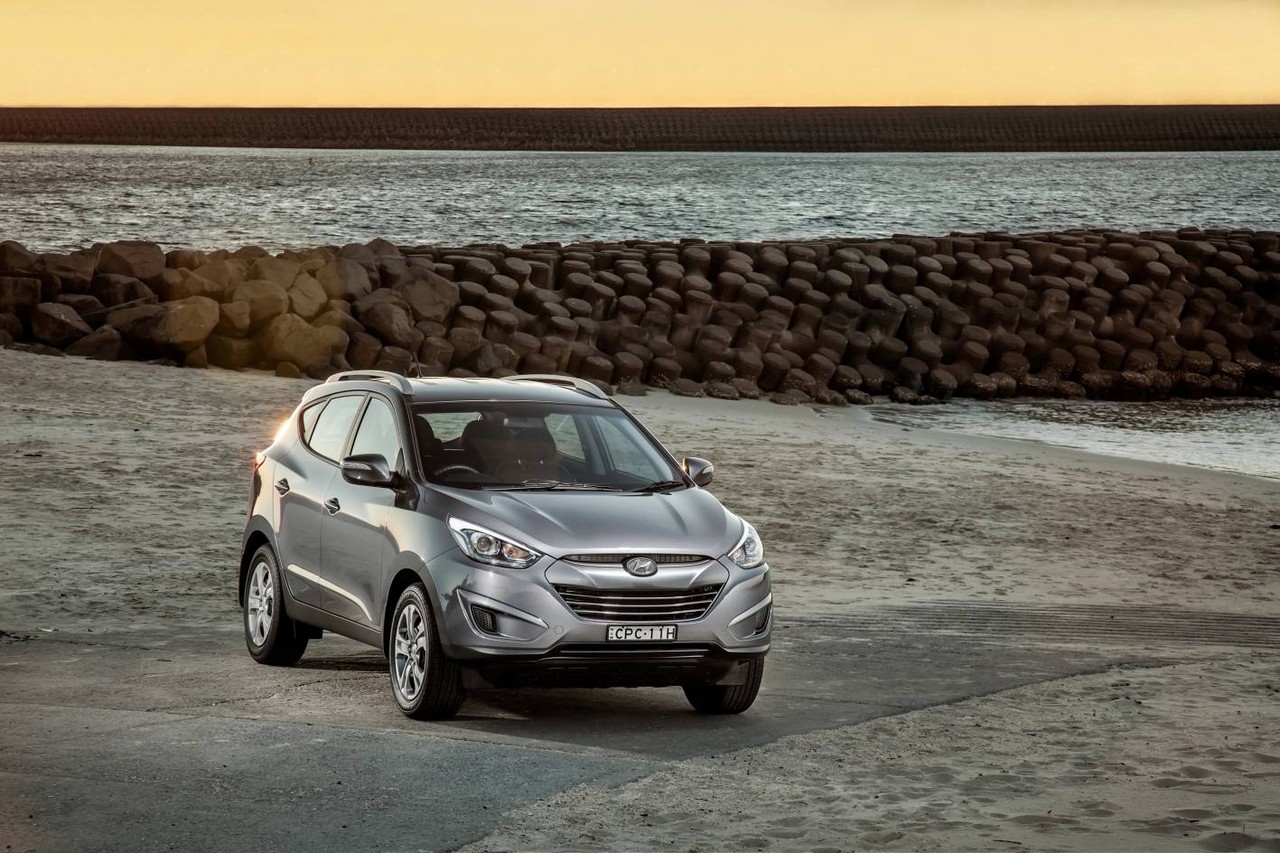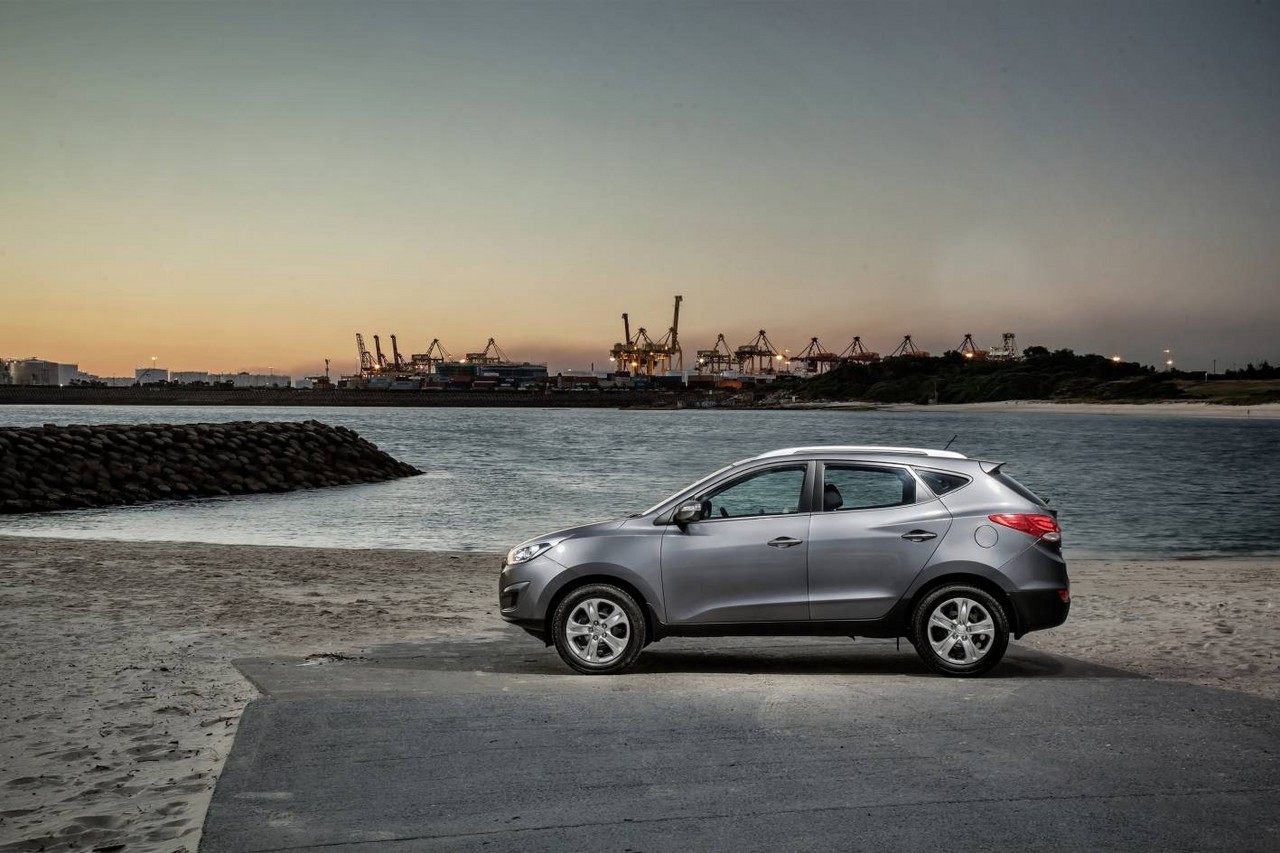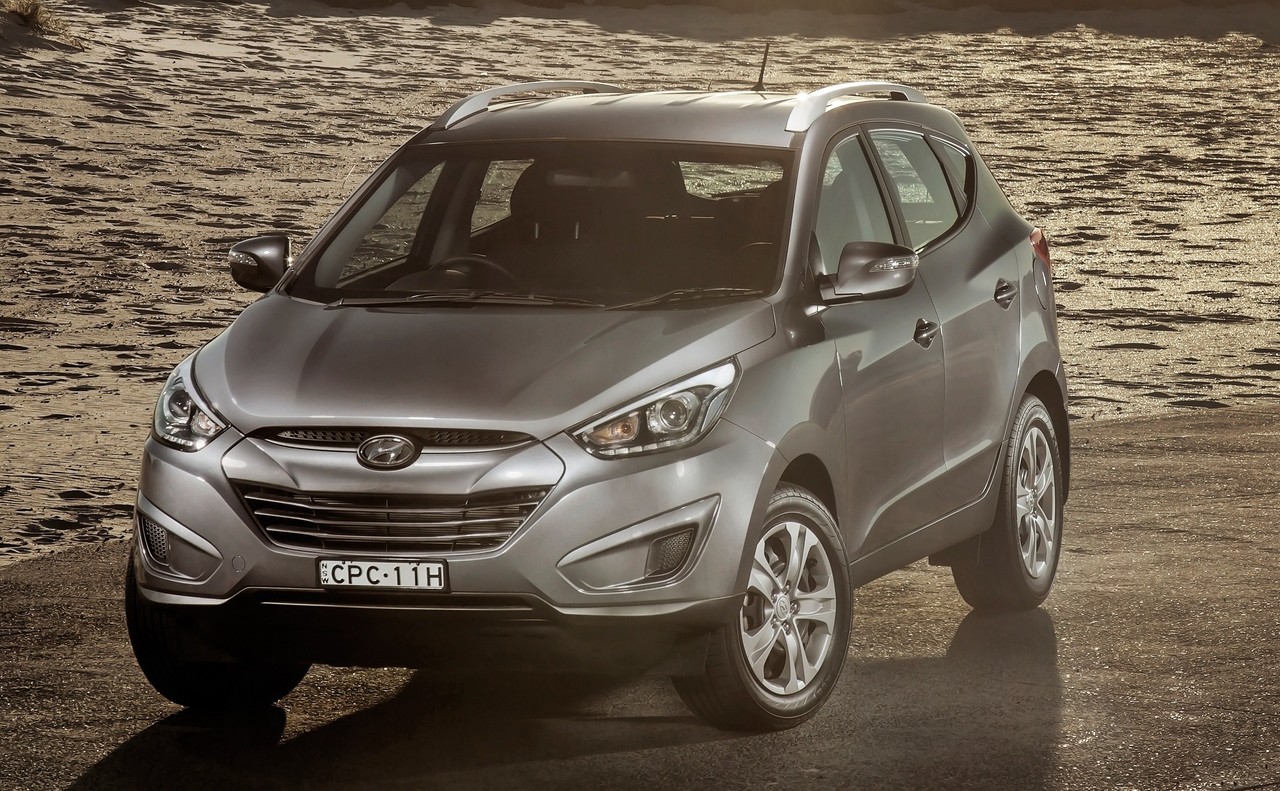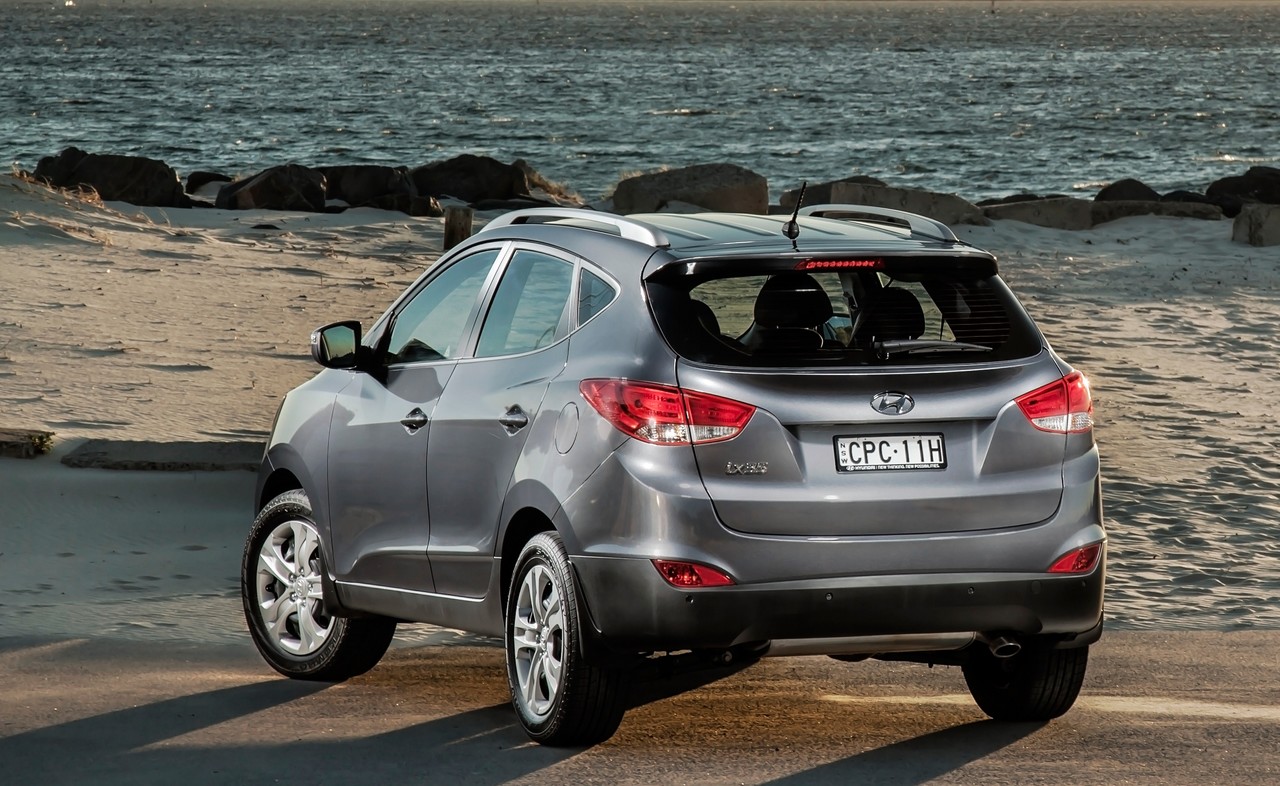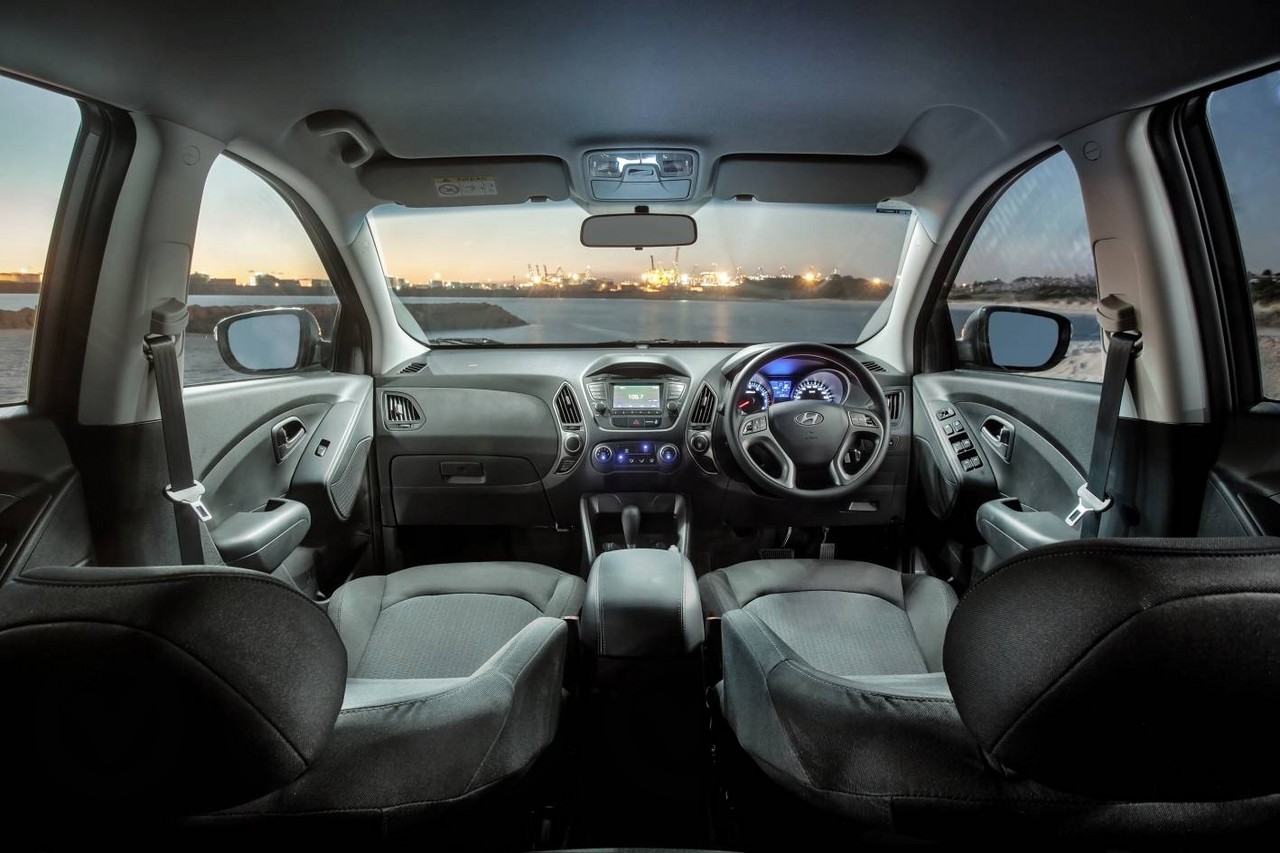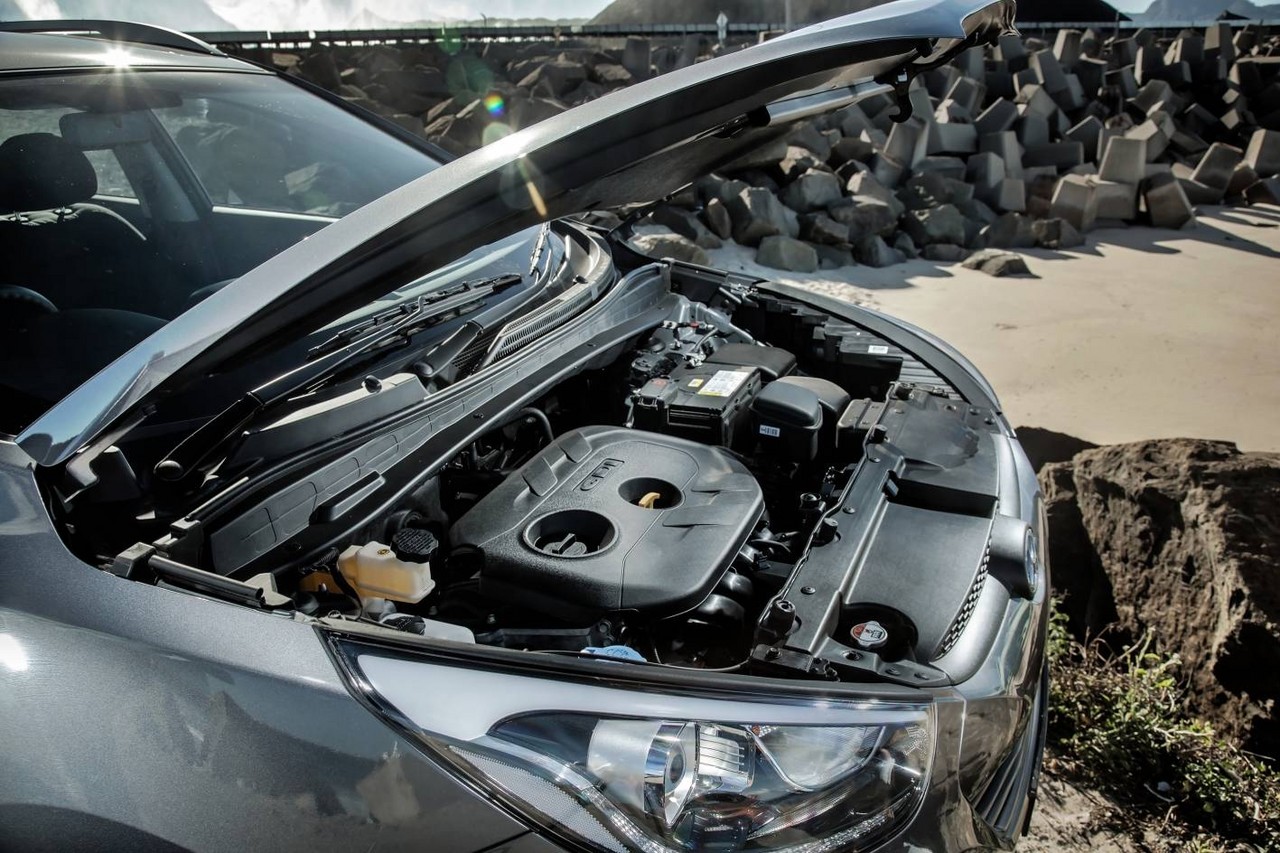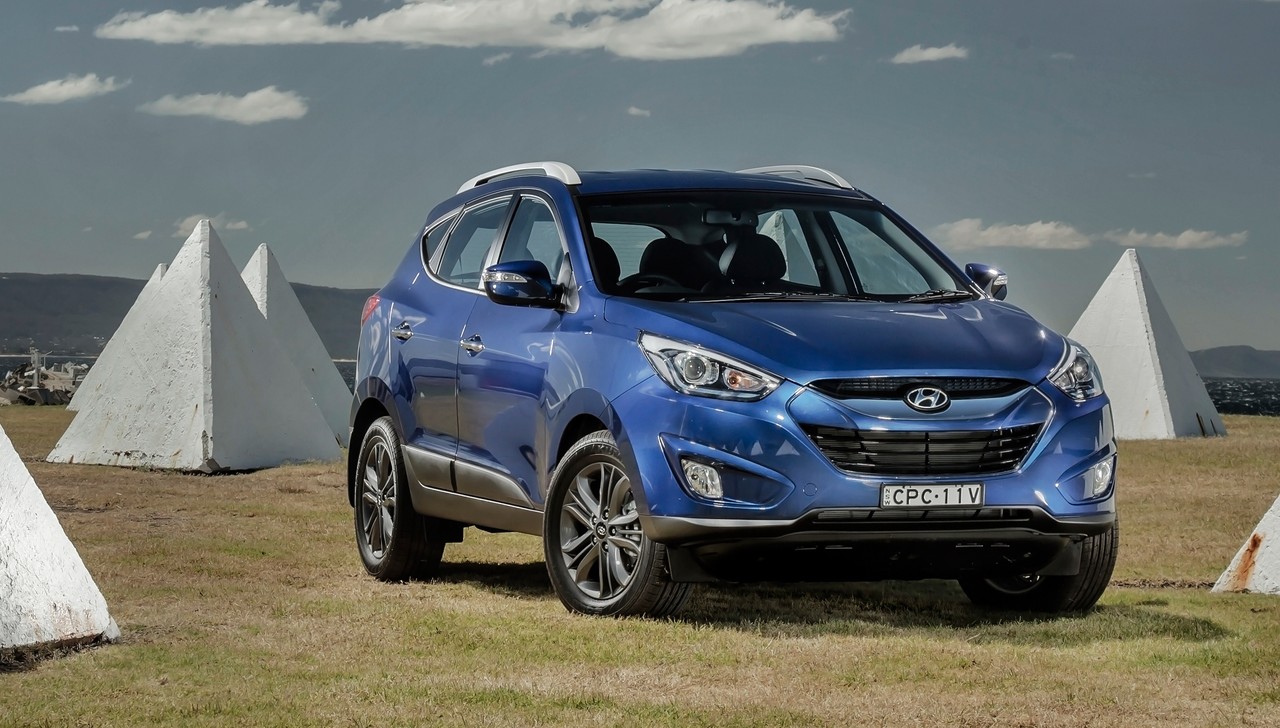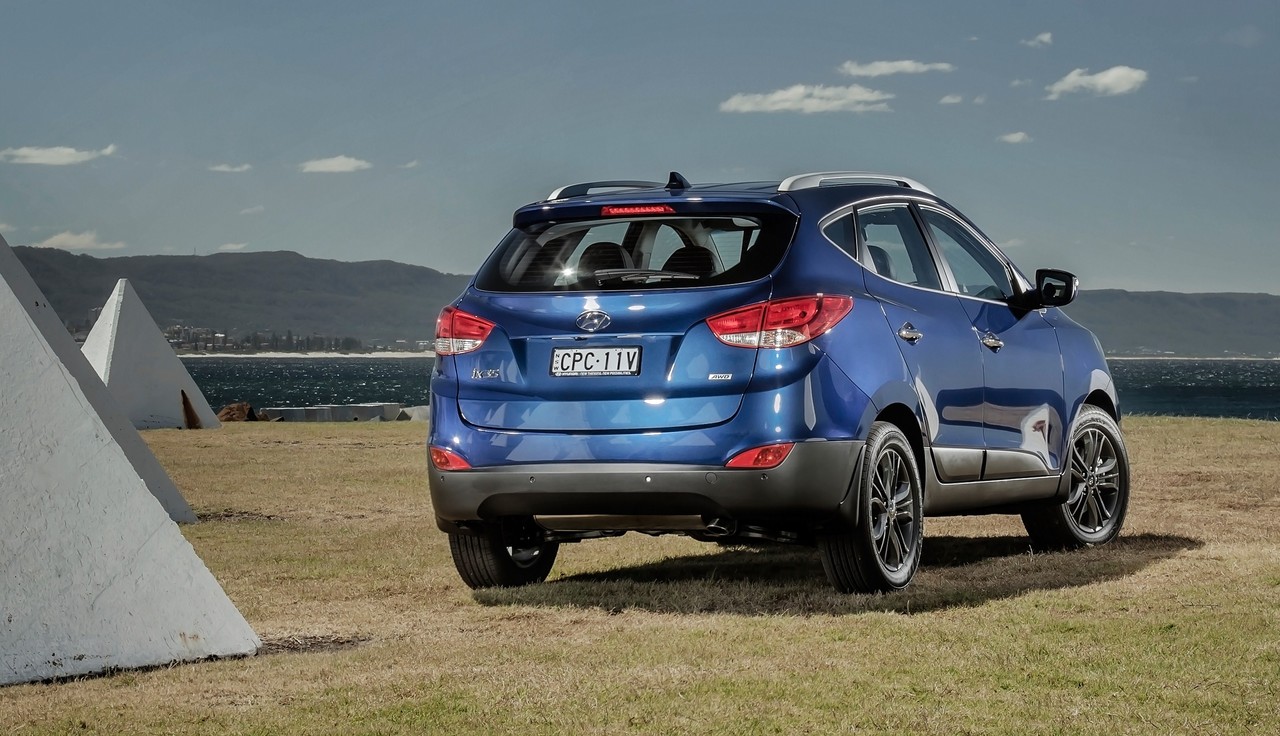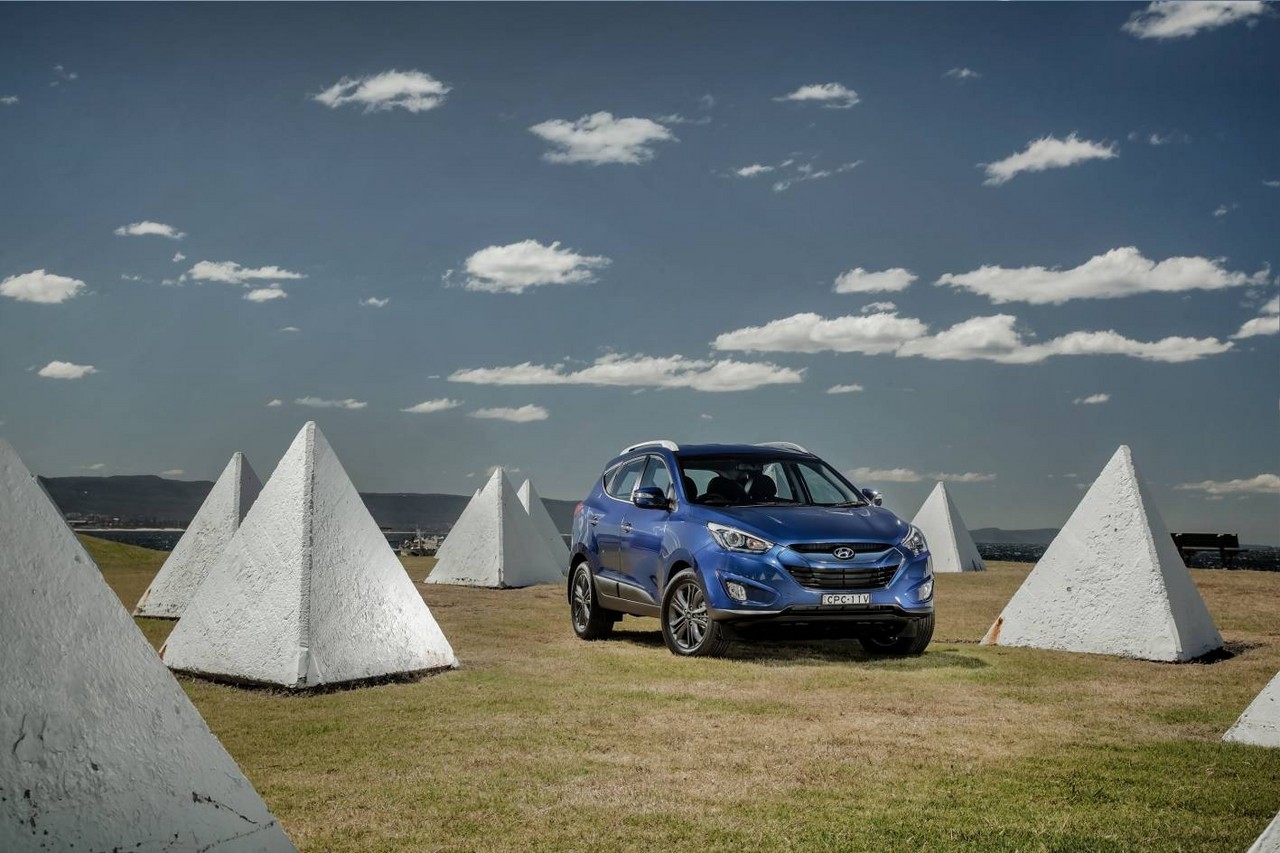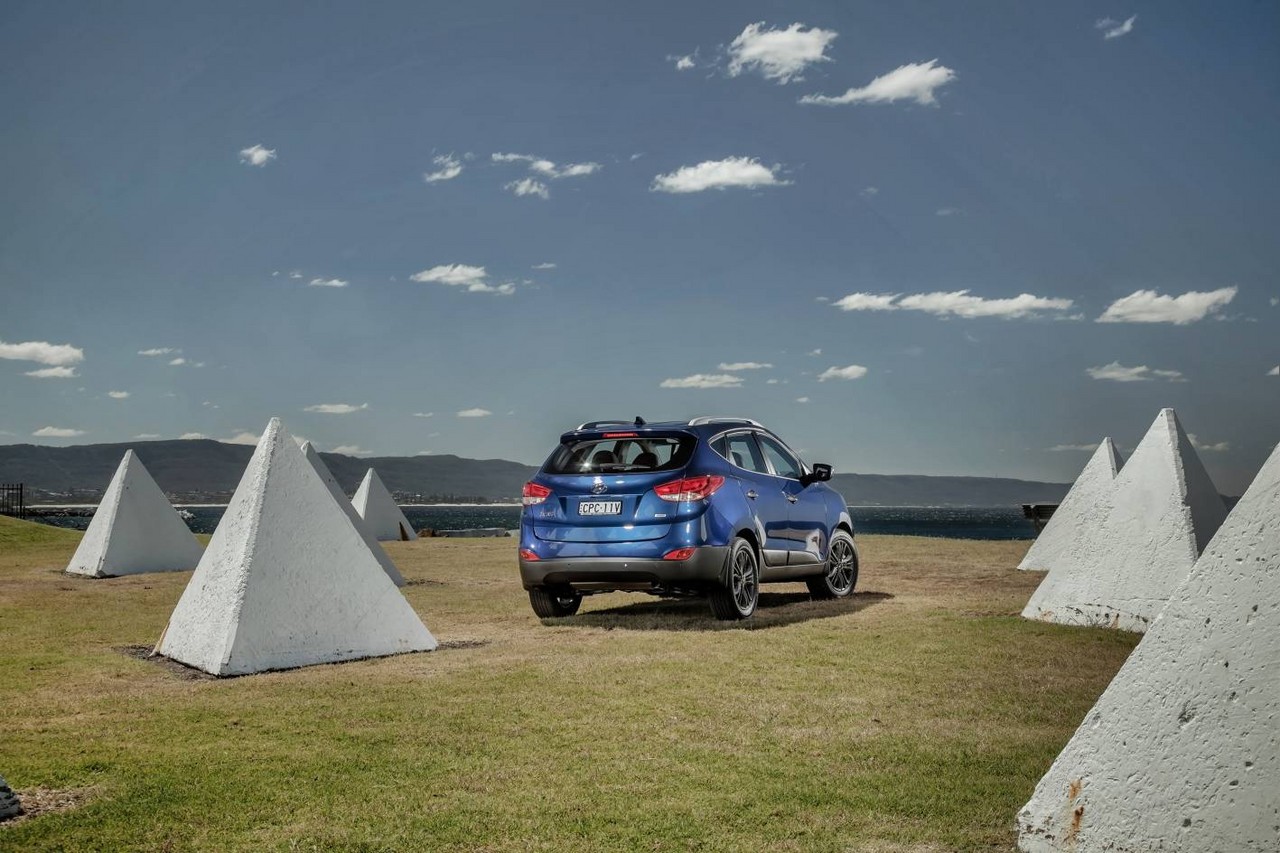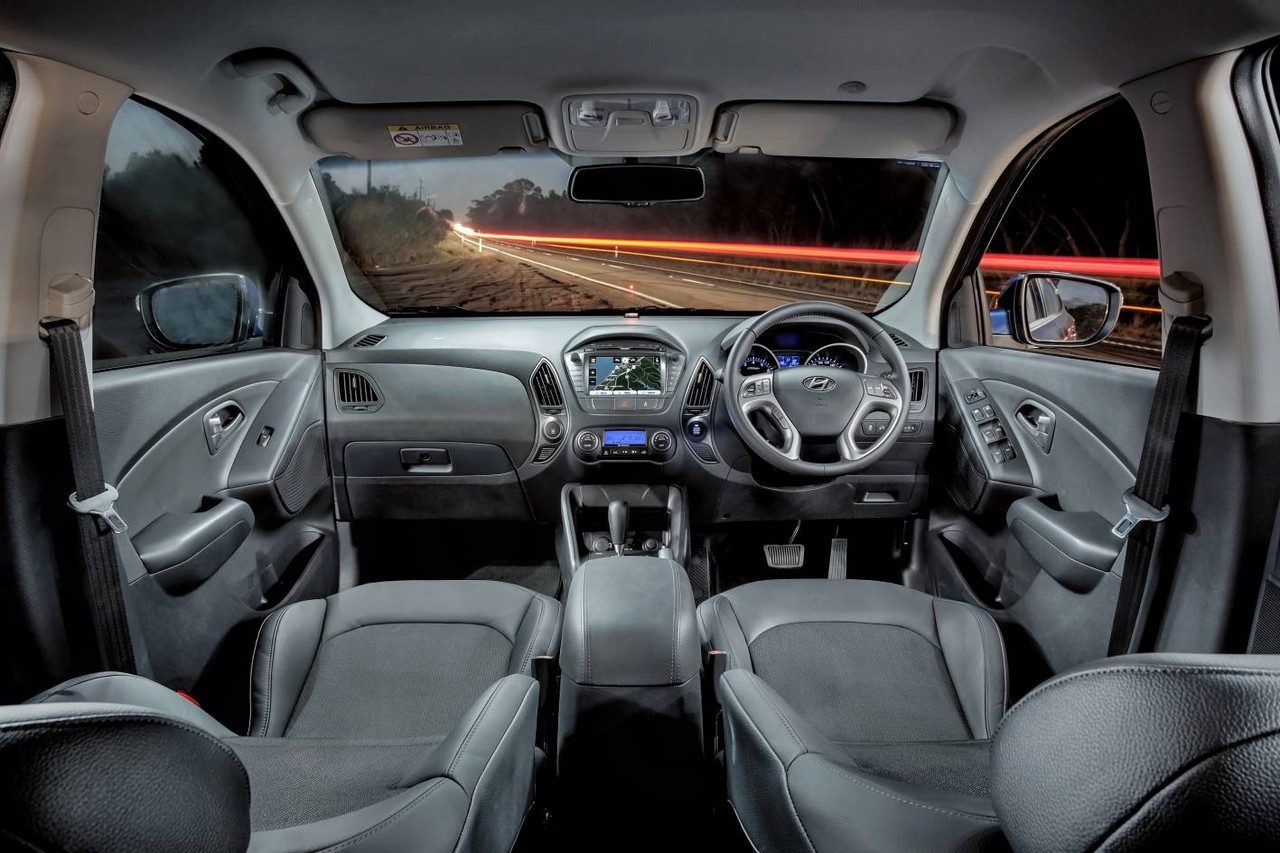
- Responsive turbo-diesel engine
- Affordable retail pricing
- Australian-tuned LM.II ix35 has improved ride/handling balance
- Suspension lacks compliance (particularly for LM.I ix35)
- Underpowered 2.0-litre petrol engine
- Cabin lacks sound insulation
Review: Hyundai LM.I ix35 (2010-13)
Overview
Released in February 2010, the Hyundai LM Series I (LM.I) ix35 was a mid-size SUV. Initially manufactured in Ulsan, South Korea, the ix35 range consisted of three variants – 2.0, 2.4 and 2.0 CRDi – with the variant names referring to their engines.
The ix35 was initially available in entry-level Active, mid-range Elite and range-topping Highlander editions. In January 2013, however, an SE edition was released which was manufactured at Hyundai’s Zilina plant in Slovakia. From March 2013, the Slovakian-built SE editions were available with turbo-diesel engines.
G4KG petrol and D4HA diesel engines
Of the engines,
- the 2.0-litre G4KD and 2.4-litre G4KG ‘Theta II’ petrol engines had aluminium cylinder blocks and heads, double overhead camshaft, four valves per cylinder, continuously variable intake and exhaust valve timing (D-CVVT), variable intake systems and compression ratios of 10.5:1; and,
- the 2.0-litre D4HA ‘R’ diesel engine had an aluminium block and cylinder head, common-rail direct injection with piezo-electric injectors (operating at 1800 bar), a variable geometry turbocharger, double overhead camshafts (chain-driven), four valves per cylinder, exhaust gas recirculation, a diesel particular filter and a compression ratio of 16.0:1.
Dimensions and body
Compared to its XD Tucson predecessor, the LM ix35 was 85 mm longer (at 4410 mm), 25 mm wider (1820 mm), 75 mm lower (1655 mm) and had a 10 mm longer wheelbase (2640 mm). Significantly, the new chassis achieved a 38 per cent increase in bending rigidity.
Suspension
The ix35 had MacPherson strut front suspension and multi-link rear suspension, with coil springs, hydraulic shock absorbers and anti-roll bars front and rear.
| Variant | Engine | Edition | Years | Trans. | Drive | Peak power | Peak torque |
|---|---|---|---|---|---|---|---|
| 2.0 | 2.0-litre petrol I4 |
Active | 2010-13 | 5sp man., 6sp auto |
FWD | 122 kW at 6200 rpm | 197 Nm at 4600 rpm |
| Elite | 2012-13 | 6sp auto | |||||
| SE | 2013 | 6sp auto | |||||
| 2.4 | 2.4-litre petrol I4 |
Elite, Highlander |
2010-13 | 6sp auto | AWD | 130 kW at 6000 rpm | 227 Nm at 4000 rpm |
| 2.0 CRDi | 2.0-litre turbo-diesel I4 | Elite, Highlander |
2010-13 | 6sp auto | AWD | 135 kW at 4000 rpm | 392 Nm at 1800-2500 rpm |
| SE | 2013 |
AWD system
The ix35 2.4 and 2.0 CRDi variants were fitted with a part-time all-wheel drive system which utilised a viscous coupling (i.e. no centre differential). As such, the ix35 was front-wheel drive in normal conditions. If traction was lost, however, the difference in front and rear wheel driveshaft speeds would increase the viscosity of the silicone fluid, causing the coupling to lock the driveshafts and transfer torque to the rear wheels. The all-wheel drive system also included ‘lock’ mode which provided a fixed 50:50 front:rear torque split for low-speed driving.
Safety equipment
Standard safety equipment for the Hyundai ix35 included dual front airbags, front side airbags, curtain airbags for front and rear occupants, ABS, electronic brake force distribution, electronic stability control, traction control, active front seat head restraints, anti-submarining front seats and front seatbelts with pretensioners and load limiters. The ix35 was also fitted with down-hill brake control and hill start assist.
Euro NCAP testing
In Euro NCAP testing , the ix35 received a five star safety rating which included a 90 per cent adult occupant protection rating and an 88 per cent child occupant protection rating. In the offset crash test, there was a slight risk of serious leg injury for both front occupants and a slight risk of serious chest injury for the driver. Maximum points were awarded in the side impact test, though chest protection was rated as marginal in the more severe pole test. Under ANCAP’s methodology , this testing resulted in a five star adult occupant protection rating with a score of 34.15 out of 37.
Features: ix35 Active, Elite and Highlander
Standard features for the ix35 Active included a six speaker sound system with CD player, MP3-compatiblity and auxiliary inputs (3.5 mm/USB), air conditioning, a power adjustable driver’s seat, cruise control, rear fog lamps, steering wheel audio controls, 60/40 split and folding rear seats, remote central locking, power windows and mirrors, a tilt adjustable steering wheel, height adjustable driver’s seat, front and rear 12 volt power outlets, a cargo blind, trip computer and an immobiliser.
Beyond this, the ix35 Elite added 17-inch alloy wheels, combination cloth/leather seats, front fog lamps, automatic headlights, a leather-wrapped steering wheel, proximity key, push-button start, roof rails and cargo net.
The ix35 Highlander was further equipped with 18-inch alloy wheels, a sound system with a separate amplifier and subwoofer, a six-disc CD changer, dual-zone climate control air conditioning, leather seats, heated front seats, a six-way power adjustable driver’s seat, rear parking sensors, a rear camera, folding power mirrors, a panoramic glass sunroof and an electrochromatic rear view mirror.
October 2010: ix35 update
In October 2010, the ix35 underwent a minor update (for the 2011 model year), with the hydraulic steering system replaced by a locally tuned electric power unit. The electric system enabled the steering wheel to be adjusted for reach, while providing increased weight and reduced kickback. Standard features were also enhanced to include rear parking sensors and Bluetooth connectivity, though the power adjustable driver’s seat for the Active editions was removed. The range-topping Highlander also featured darker-tint privacy glass and was fitted with Hyundai’s Amplitude Selective Damping (ASD) system.
August 2012: ix35 update
In August 2012, the ix35 was updated (for the 2013 model year) and a 2.0 Elite model was released. As part of the update, Active editions received a new audio system with a five-inch touch screen, iPod and Bluetooth connectivity and Bluetooth audio streaming. Beyond this, Elite editions gained dual-zone climate control air conditioning, a reversing camera and an electrochromatic rear view mirror, while both the Elite and Highlander editions were fitted with a satellite navigation system which included a 6.5-inch touch screen, SUNA live traffic updates and Navteq maps.
Features: 2013 Hyundai ix35 SE
Compared to the entry-level Active editions, the ix35 SE was further equipped with 17-inch alloy wheels, full leather/leatherette seat trim, heated front and rear seats, a cooled glove box, front fog lights, automatic headlights, a leather-wrapped steering wheel and gear shift knob, power folding mirrors and rear privacy glass. Visually, the SE editions could be identified by their unique front bumpers with in-set fog lights.
Brochure
Related links
- Press release: Hyundai LM.I ix35 update (October 2010)
- Press release: Hyundai LM.I ix35 2.4 Highlander (December 2010)
- Press release: Hyundai LM.I ix35 2.0 Elite FWD (August 2012)
- Press release: Hyundai LM.I ix35 2.0 SE (January 2013)
- Press release: Hyundai LM.I ix35 2.0 CRDi SE (March 2013)
- Specifications: Hyundai LM.I ix35 SE (October 2013)
Review: Hyundai LM.II ix35 (2013-15)
Overview
Released in October 2013, the LM Series II (LM.II) ix35 introduced new 2.0- and 2.4-litre petrol engines, cosmetic updates and locally-tuned suspension and steering for Australian conditions.
Visually, the LM.II ix35 could be identified by its new 17- and 18-inch alloy wheel designs, headlight treatments and metal-effect roof rails (fitted as standard). Inside, there was a new rear seat reclining function, cloth seat designs for Active editions and soft-touch upper door trims for Elite and Highlander editions.
G4NC and G4KJ petrol engines
Of the engines,
- The 2.0-litre G4NC ‘Nu’ petrol engine had an aluminium block and cylinder head, direct fuel injection, double overhead camshafts (chain-driven), four valves per cylinder, continuously variable intake and exhaust valve timing (Hyundai’s D-CVVT), a two-stage variable intake system and a compression ratio of 11.5:1; and,
- The 2.4-litre G4KJ ‘Theta II’ engine had similar properties but differed in that it had a three-stage variable induction system and a compression ratio of 11.3:1.
The 2.0-litre D4HA turbo-diesel engine, however, was carried over unchanged.
| Variant | Engine | Edition | Trans. | Drive | Peak power | Peak torque |
|---|---|---|---|---|---|---|
| 2.0 GDI | 2.0-litre petrol I4 | Active | 6sp man. | FWD | 122 kW at 6200 rpm | 205 Nm at 4000 rpm |
| Active, Special Edition, Trophy, Elite |
6sp auto | |||||
| 2.4 GDI | 2.4-litre petrol I4 | Elite, Highlander |
6sp auto | AWD | 136 kW at 6000 rpm | 240 Nm at 4000 rpm |
| 2.0 CRDI | 2.0-litre turbo-diesel I4 | Special Edition, Elite, Highlander |
6sp auto | AWD | 135 kW at 4000 rpm | 392 Nm at 1800-2500 rpm |
Safety equipment
Compared to its LM.I predecessor, standard safety equipment for the LM.II ix35 was unchanged.
Features: ix35 Active, Elite and Highlander
Standard features for the ix35 Active included 17-inch steel wheels with 225/60 R17 tyres, a six speaker sound system with a CD player, MP3-compatibility, auxiliary inputs (3.5 mm/USB/iPod), Bluetooth mobile phone connectivity and audio streaming, air conditioning, cruise control, rear fog lamps, rear parking sensors, steering wheel audio controls, 60/40 split and folding rear seats, remote central locking, power windows and heated mirrors, tilt and telescopic steering wheel adjustment, a height adjustable driver’s seat, two 12 volt power outlets, roof rails, a trip computer and an immobiliser.
The ix35 Elite was further equipped with 17-inch alloy wheels, a CD/DVD player, satellite navigation with a seven-inch touch screen, dual-zone climate control air conditioning, a power adjustable driver’s seat, combination cloth/leather seats, front fog lights, a reversing camera, automatic headlights, a leather-wrapped steering wheel, proximity key with push-button start, an electrochromatic rear view mirror, illuminated vanity mirrors and a cargo net. Visually, the Elite and Highlander editions were differentiated by their chrome door handles and chrome upper grille surrounds.
The range-topping ix35 Highlander was distinguished by its 18-inch alloy wheels with 225/55 R18 tyres, leather seats, heated front seats, panoramic glass roof, power folding side mirrors and rear privacy glass.
ix35 Special Edition (SE)
Released in October 2013, the ix35 Special Edition (SE) was based on the entry-level Active but further equipped with 17-inch alloy wheels, full leather/leatherette seat trim, heated front and rear seats, a cooled glove box, front fog lights, automatic headlights, a leather-wrapped steering wheel and gear shift knob, power folding mirrors and rear privacy glass.
The 2014 ix35 Special Edition was also fitted with an electrochromatic rear view mirror which had a rear view camera display.
2014 ix35 Trophy
Released in January 2014, the ix35 Trophy edition was based on the entry-level Active edition but further equipped with 17-inch five triple-spoke alloy wheels, leather seat trim, heated front and rear seats, a cooled glovebox, front fog lights, a reversing camera, automatic headlights, a premium steering wheel and gearshift lever, power folding mirrors, rear privacy glass and an electrochromatic rear view mirror.
Brochure
Related links
- Specifications: Hyundai LM.II ix35 (October 2013)
- Press release: Hyundai LM.II ix35 Trophy (January 2014)
- Hyundai Motor Company Australia: Hyundai ix35
- Wikipedia.org: Hyundai Tucson (second generation)
